MedicalAlertBuyersGuide.org is an independent review site. We may earn money when you click on links on our site. Learn More
FastHelp™ Medical Alert Review – Is It Worth It?
Updated 8/13/2019
We recently tested the FastHelp medical alert device. As shown in this article, we aren’t fans of NON-professionally-monitored “no monthly fee” alert devices. However, we will admit that the convenience, portability, and pricing of this particular device compelled us enough to give FastHelp a detailed look.
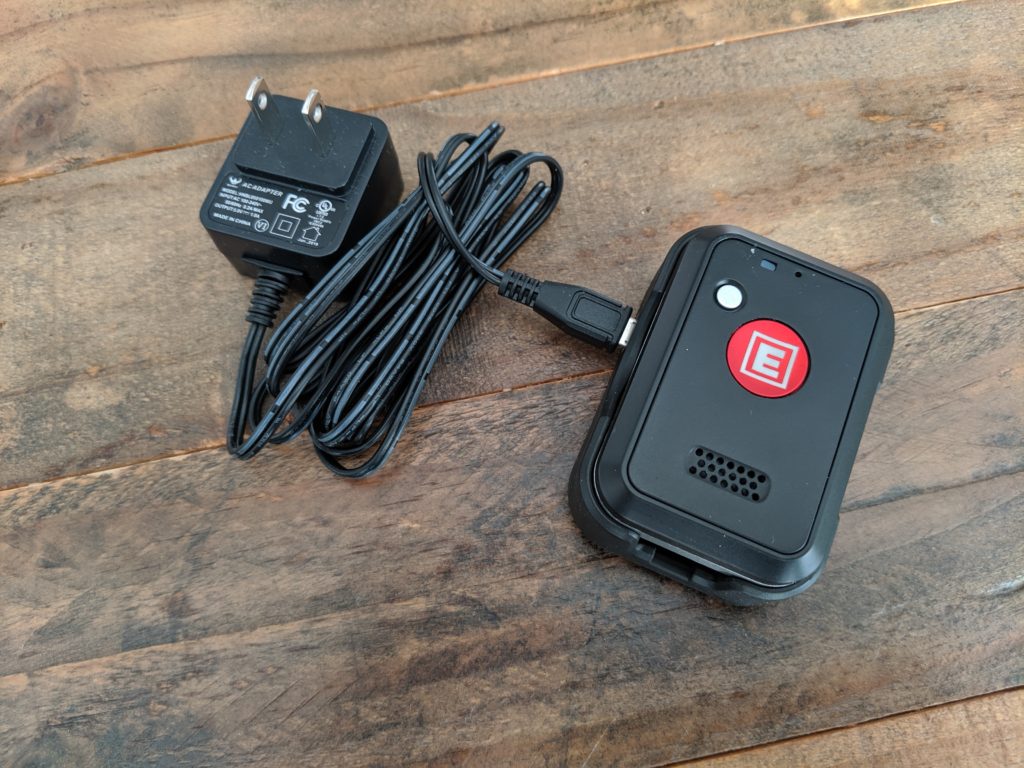
Buying Experience
We’ll be the first to say that FastHelp’s offer is hard to ignore. For $149 (“regular price” is $299), you get a sleek looking device that will call 911 wherever you are.
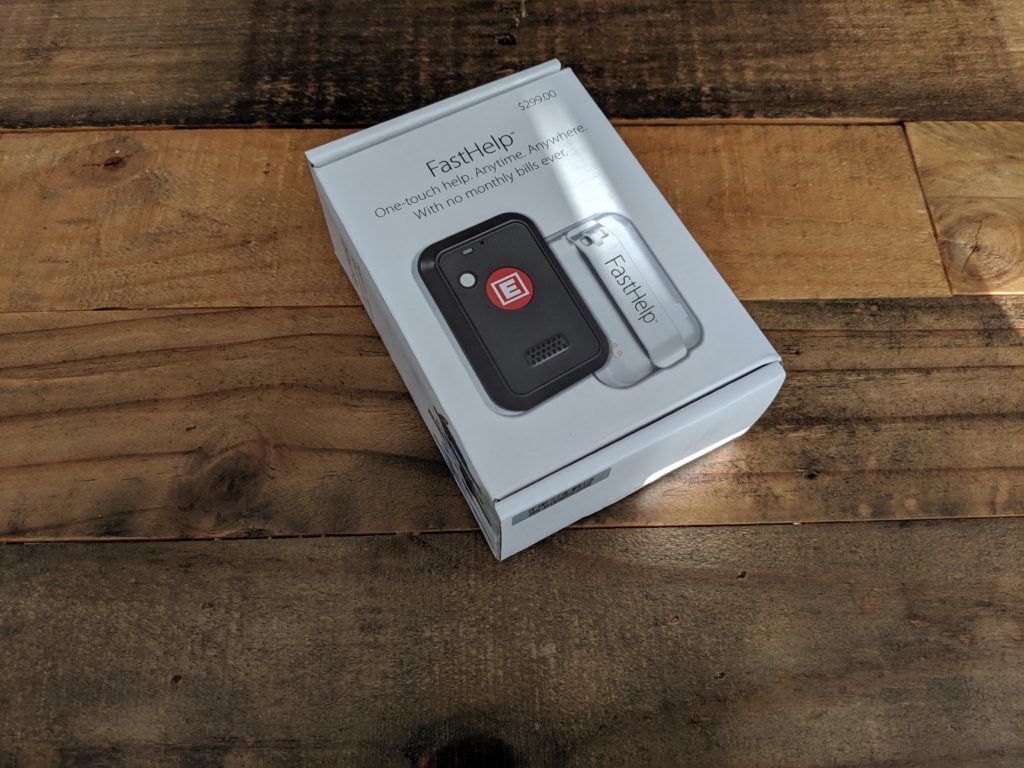
We purchased the device through FastHelp’s website. It is not the best looking web experience, but it was easy to navigate and straightforward. The system had a flat shipping rate of $13.86 — no taxes for us in California. Delivery took around a week’s time.
Equipment Review
The device was nicely packaged and included everything we needed to get up and running. We found the unit to be small, lightweight, and easy to carry around while out and about. It looks similar to pagers everyone had in the 90’s and easily fits in the palm of your hand.
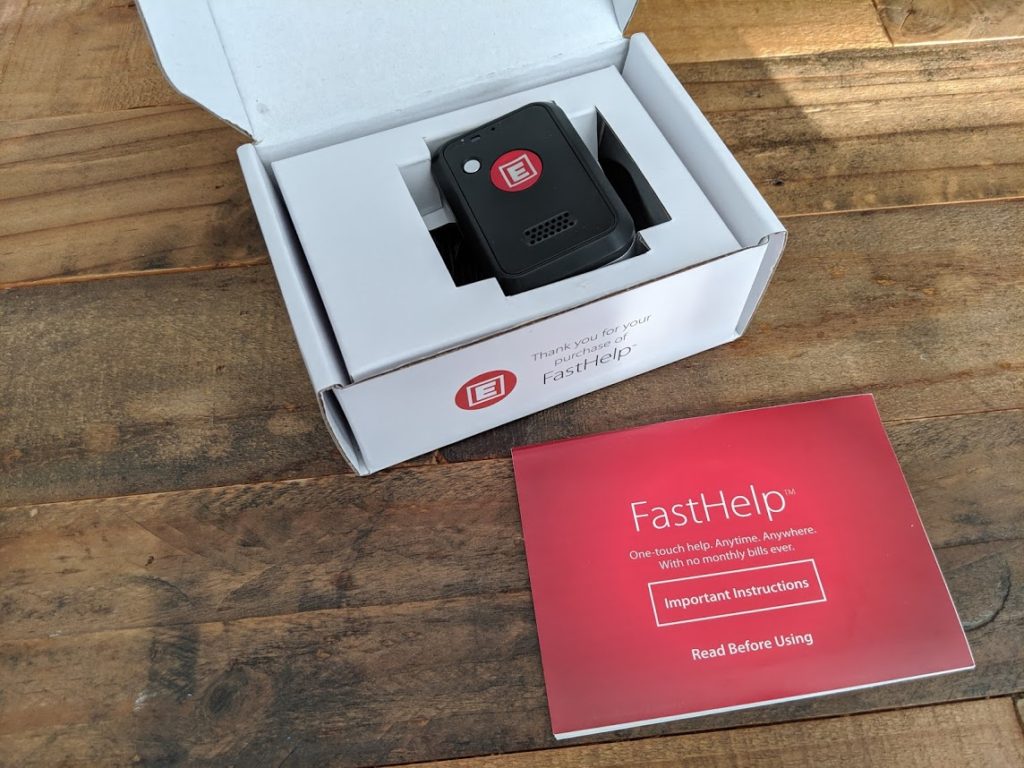
The included cradle was required for charging the device. Inserting the FastHelp unit into the cradle took a bit of finagling. It didn’t really drop in smoothly but other than that, things were pretty straightforward.
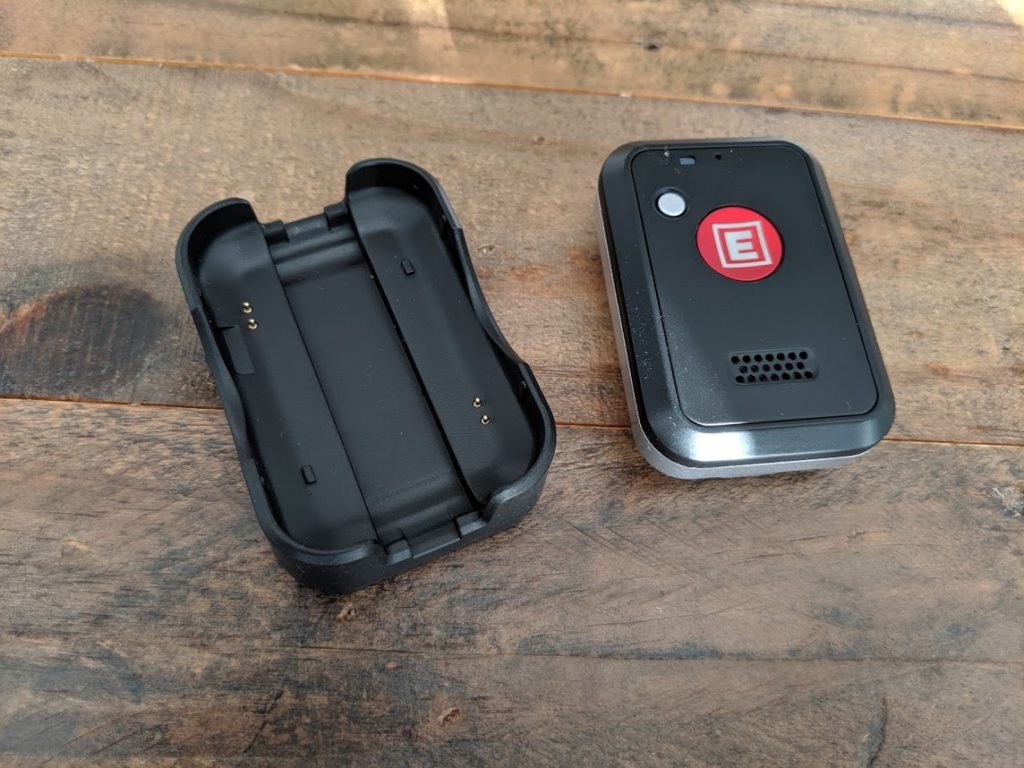
We also liked the convenience of its built-in belt clip.
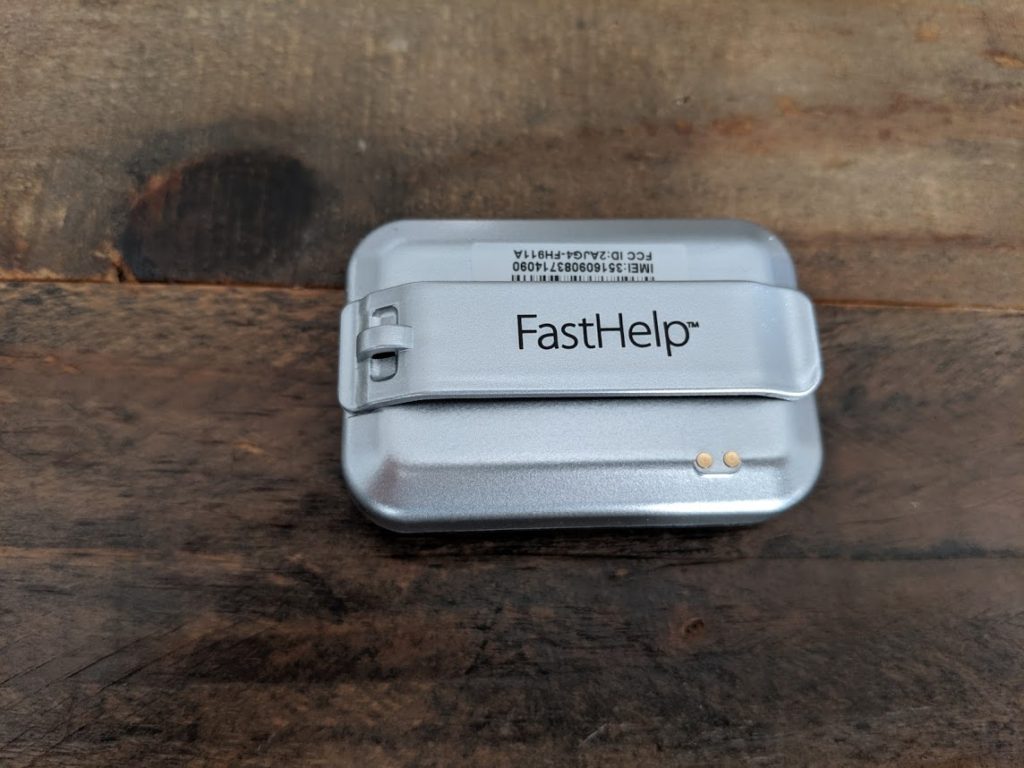
FastHelp recommends checking the battery levels and fully re-charging the unit every month. The device takes 4 hours to fully recharge.
Functionality
We found the FastHelp alert unit simple to operate. Press and hold the red “E” button for 5 seconds and a 911 operator will pick up the phone. The draw to this functionality is that a push of one button is faster and easier than multiple keystrokes to pass a cellphone lock screen and dialing out in an emergency. When you or someone you’re with is in danger, you need help right away. For medical emergencies such as a cardiac arrest, every second counts.
The front of the device has only two buttons. A small silver button to the left of the main controller is used for testing battery levels and cellular coverage.
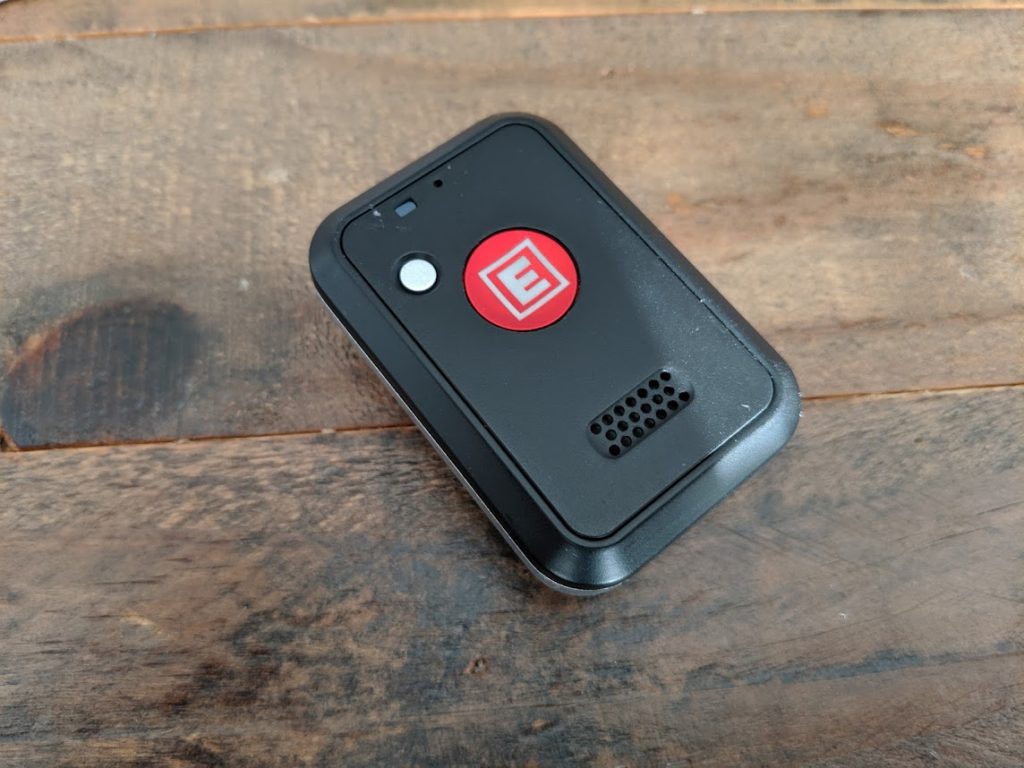
Once activated, the device responds by saying “calling 911, calling 911”. If a call to 911 is made by accident, pressing and holding the silver button cancels the call. FastHelp is essentially an emergency phone that works anywhere there is a 4G cellular connection —without monthly service bills.
Real-World Testing
Note: Since the FastHelp device calls 911 directly, we limited our testing to just three calls so as to not disrupt actual people in need of emergency assistance.
FastHelp claims to be ideal for seniors living alone, children or college students, and those traveling by themselves. Unfortunately, we discovered that the device fell flat. The actual response time was adequate as a 911 operator came over the line in around a minute. However, there were a few things that in our opinion, are deal-breakers for the device.
- Low volume – Although the “calling 911, calling 911” recorded voice message was audible, the volume of the 911 agent’s voice was incredibly soft once connected. I mean really, really soft. I’m in my mid-30’s and had a really hard time making out what the operator was trying to say. Seniors who are hard of hearing may become frustrated with this system.
- Poor sound quality – To make matters worse, the 911 agent on the other end had difficulty hearing me. I literally had to shout, “no emergency – just testing!” a few times before they hung up the phone. In an emergency where a senior is hurt and needs help, the potential for miscommunication or no communication is worrisome.
- Lacking features – No automatic fall detection option Research shows that falls or fear of falling is a number one reason for purchasing a medical alert system, so without this feature the FastHelp came up short. It’s also missing dedicated GPS, device location tracking, and professional monitoring.
To be honest, these factors really didn’t surprise us. Good two-way communication is heavily dependent on the physical size of a device and the network the device is on. Yes, the FastHelp is small and light, but the trade-offs come with an ineffective audio and mic system.
Conclusion
The FastHelp device does what it’s advertised to do. Unfortunately, we can’t recommend the product — even with its inexpensive price tag and sleek form factor.
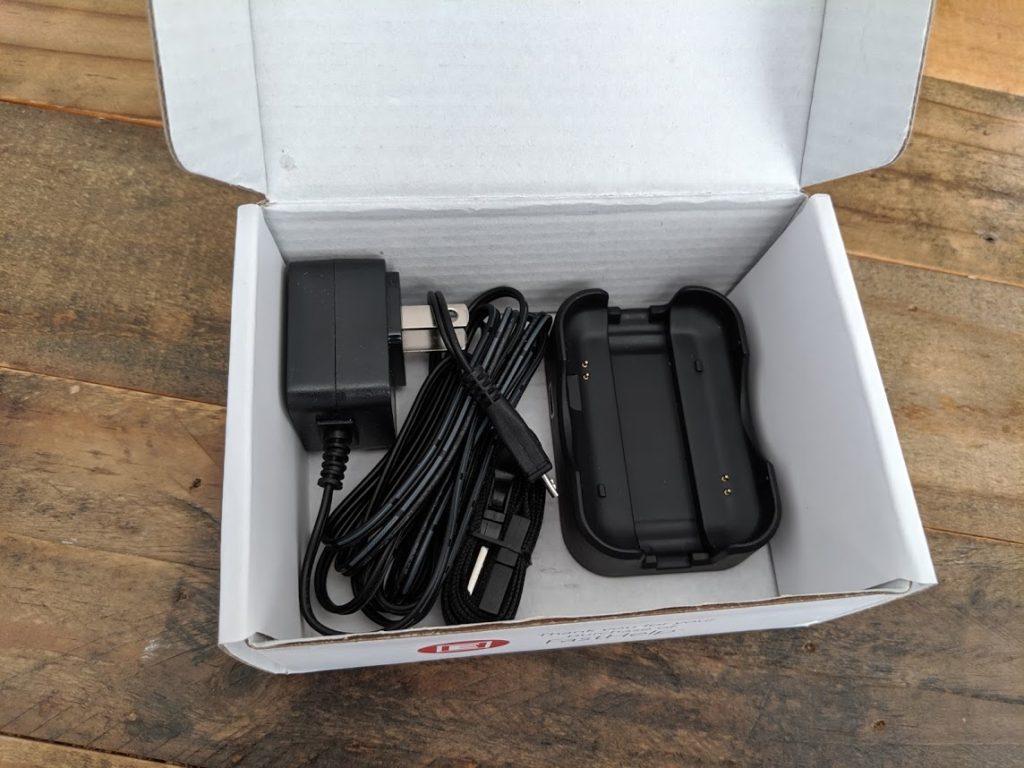
Pros
– Nice form
– Light and easy to carry around
– No monthly fees
– IPX5 water resistant
Cons
– Weak speaker
– Poor microphone
– Lacks automatic fall detection
– Only dials 911
– Uses an old and expiring 2G/3G network
Final Recommendation
As our readers know, we always recommend devices that connect to a professionally-staffed 24/7 monitored call center. Although your city may have the best 911 agents in the world, nothing replaces a dedicated rep who has your emergency contacts, address, entry codes, medical history, and other important personal information on file.
Although the cost of a monitored system may be higher in the short term, if and when a real emergency happens, we promise your loved ones will thank you for it. In addition, clinical studies show a positive benefit-to-cost ratio of over seven to one. In other words, every dollar spent on a medical alert system results in over $7 in health care cost savings.
We can confidently say that the FastHelp device isn’t something we’d personally recommend to our friends and family. However, we do appreciate that FastHelp offers a 30-day money back guarantee. So if anything, you can try it out for a few weeks and let us know how you like it.
Disclosure
The rankings and ratings expressed on this site are the opinion of MedicalAlertBuyersGuide.org and are subject to change. To keep this valuable service free, we generate advertising revenue from the companies featured in our rankings. Read our full disclosure.

